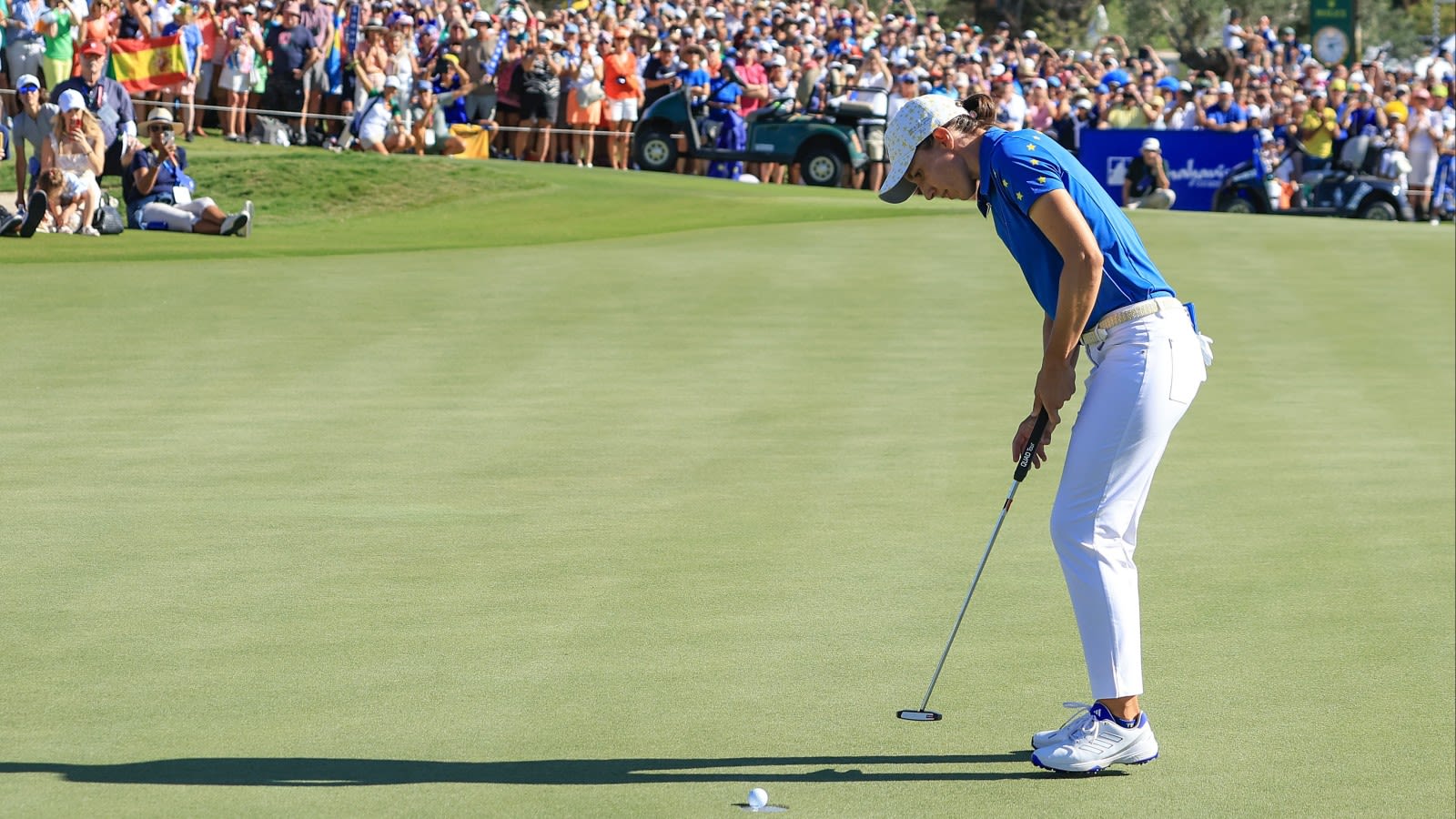Beginner
Putt Like a Solheim Cup Player With This Great Four-Step Approach
By Brendon Elliott, PGA
Published on

Carlota Ciganda sank the clinching point for Europe.(Getty Images)
Team events like the Solheim Cup always deliver excitement, memorable moments, drama and more.
Yet they also provide opportunities where we can take something from them that can be applied to our game to help improve it.
As with most team events, great play is seen throughout the matches. Solheim Cup, Ryder Cup, and even the junior versions of each showcase some remarkable golf and great players playing at the peak of their abilities. Without question, these are events well worth watching.
Looking back at this year's Solheim Cup, which ended in a tie for the first time, allowing the European squad to retain the cup, one club in the bag proved to be the most impactful: the putter.
Many clutch putts came in the form of short, mid, and long-range rolls and were often offset by agonizing lip outs and one-more-revolution heartbreakers. It was the putting that ruled the week in Spain.
To become more of a clutch putter, you must learn how to mentally transport yourself into situations like we saw at Finca Cortesin this past weekend and what we are bound to see this week in Rome at the Ryder Cup.
When something is on the line, you often see your senses heighten and your concentration peak, especially on the short grass. At the same time, you need to embrace a childlike attitude where you are fearless and can stroke putts with that feeling solidly cemented in your mind.
Great putting starts on the practice green through dedicated extended sessions and a multilayered four-step approach.
Layer No. 1: Technique
Dialing in your alignment, setup, a grip that works best for you, and working on face control through impact are the key technical points to work on. The best way to do this is to roll multiple short and mid-range putts, ranging from 3-9 feet, focusing only on those previously mentioned technical points.
The circle drill is best here, where you putt from four points around the hole, from three, six and nine feet. With three balls, you must make each in a row from all four spots in order to move back to the 6-footer. Repeat the process going back to the 9-footer. Once completed, keep on going! You need to spend a lot of time on this aspect of putting to really get yourself dialed in.
Layer No. 2: Tempo
Your tempo, or the ratio between your backstroke and through-stroke, is another critical aspect to tackle. The best putters in the world maintain about a 2:1 ratio, meaning their through-stroke is two times as fast as their backstroke. The speed of your stroke can vary depending on you and your personality, but the rate must stay in that 2:1 ratio on each and every putt, from a 3-footer to a 50-footer. The only thing that changes as putts get longer is the length of the stroke.
To work on this, do the circle drill as mentioned in Layer 1. In addition to trying to make three consecutive putts, you also want to maintain that 2:1 ratio on every putt.
Once you get through your 3', 6', and 9' putts successfully, with makes and a consistent tempo reading, give yourself a 40' putt. Go through four sets of three balls from that distance and try to get two putts on 10 out of 12 of those putts, with a consistent 2:1 ratio reading.
Layer No. 3: Green Reading & Routine Development
Next up is learning to become a great green reader. I advise developing a plan to adopt while playing on the course. You can practice this on the practice green, but it is best to work on it while playing the course in a practice or casual round.
In February of this year, I wrote about a great 10-step process that can help you in this regard. Check out A Ten-Step Solution to Making More Putts to learn more.
Layer No. 4: Self-Belief
Great putters always think they are just that, a great putter. Developing a mindset that allows you to putt well comes through really getting comfortable with the previous three layers. Putts going in the hole more often require you to believe they will.
I advise working hard on those first three layers and reading or listening to the audiobook Putting Out of Your Mind by Dr. Bob Rotella. It’s a classic and well worth the time diving into.


